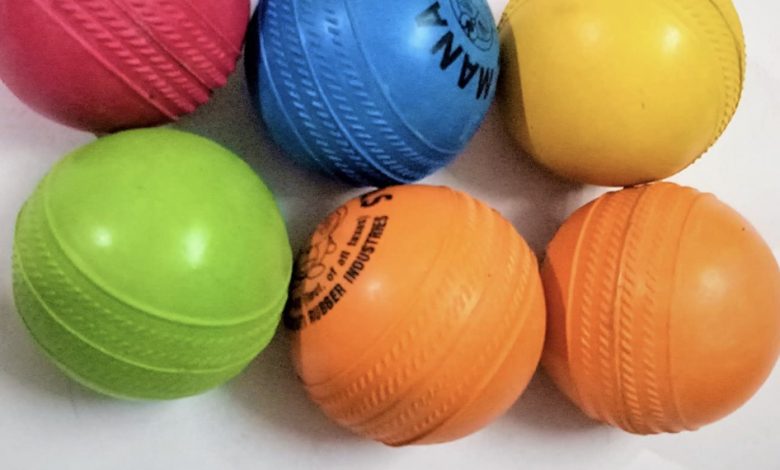The first known use of the word ball

The first known use of the word ball in English in the sense of a globular body that is played with was in 1205 in Laȝamon’s Brut, or Chronicle of Britain in the phrase, “Summe heo driuen balles wide ȝeond Þa feldes.” The word came from the Middle English
bal (inflected as ball-e, -es, in turn from Old Norse böllr (pronounced [bɔlːr]; compare Old Swedish baller, and Swedish boll) from Proto-Germanic ballu-z (whence probably Middle High German bal, ball-es, Middle Dutch bal), a cognate with Old High German ballo, pallo, Middle High German balle from Proto-Germanic *ballon (weak masculine), and Old High German
ballâ, pallâ, Middle High German balle, Proto-Germanic *ballôn (weak feminine). No Old English representative of any of these is known. (The answering forms in Old English would have been beallu, -a, -e—compare bealluc, ballock.) If ball- was native in Germanic, it may have been a cognate with the Latin foll-is in sense of a “thing blown up or inflated.” In the
later Middle English spelling balle the word coincided graphically with the French balle “ball” and “bale” which has hence been erroneously assumed to be its source. French balle (but not boule) is assumed to be of Germanic origin, itself, however. In Ancient Greek the word πάλλα (palla) for “ball” is attested[2] besides the word σφαίρα (sfaíra), sphere.[3]
History
Russian leather balls (Russian: мячи), 12th-13th century.
A ball, as the essential feature in many forms of gameplay requiring physical exertion, must date from the very earliest times. A rolling object appeals not only to a human baby, but to a kitten and a puppy. Some form of game with a ball is found portrayed on
Egyptian monuments, and is played among aboriginal tribes at the present day. In Homer, Nausicaa was playing at ball with her maidens when Odysseus first saw her in the land of the Phaeacians (Od. vi. 100). And Halios and Laodamas performed before Alcinous and Odysseus with ball play, accompanied with dancing (Od. viii. 370). The most ancient balls in Eurasia have been discovered in Karasahr, China and are 3.000 years old. They were made of hair-filled leather.[4]
